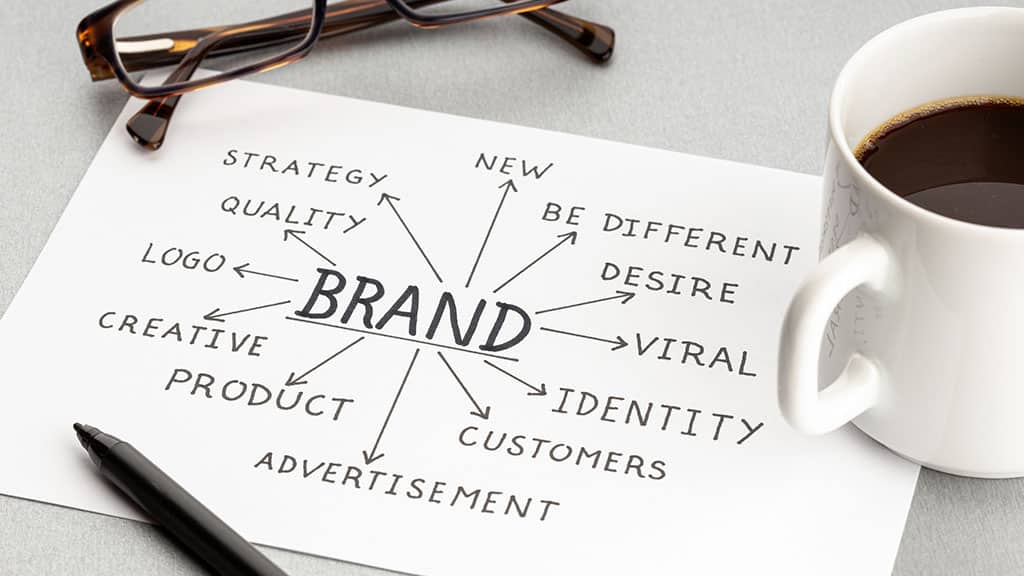The Ultimate Guide to Building a Memorable Brand Identity
Brand identity is more than just a logo or a color scheme—it’s the complete visual, emotional, and communicative representation of a business. It defines how a company is perceived by its audience and sets the foundation for long-term success. A strong brand identity makes a business recognizable, helps build trust with customers, and differentiates it from competitors. Without a cohesive identity, even the best products or services can struggle to gain traction in a crowded market.
Brand identity is crucial because it influences how people feel about a company. Consumers are naturally drawn to brands that align with their values and resonate emotionally. Whether through storytelling, design, or messaging, businesses that establish a strong identity are more likely to create lasting relationships with customers. Think about the most successful companies—Apple, Nike, and Coca-Cola, for example. These brands have crafted identities that go far beyond their products, shaping consumer perceptions through consistent branding elements and messaging. When done effectively, brand identity creates recognition, builds loyalty, and establishes credibility in the marketplace.
Understanding Your Brand’s Core Values and Mission
At the heart of every strong brand identity lies a well-defined set of core values and a clear mission. These elements shape everything from messaging to visual design and even customer interactions. Without them, branding efforts can feel scattered and lack authenticity. Customers today are more discerning than ever, and they want to support brands that align with their personal values.
Defining core values starts with understanding what the brand stands for. Is it committed to sustainability? Innovation? Customer service? Social impact? Identifying these guiding principles allows businesses to create a foundation for their identity that feels authentic and consistent. A brand’s mission further clarifies its purpose—why it exists and what it aims to achieve beyond making a profit. For example, Patagonia’s mission isn’t just about selling outdoor gear; it’s about environmental responsibility and conservation. This strong brand positioning makes them stand out in their industry and fosters a loyal community of like-minded consumers.
Businesses that struggle with defining their core values can start by asking key questions: What problem are they solving? What do they want to be known for? How do they want customers to feel? The answers to these questions help form the backbone of a compelling brand identity. Once these values are established, they should be communicated consistently across all brand touchpoints, from marketing materials to customer service interactions.
Defining Your Target Audience
A brand cannot be memorable if it tries to appeal to everyone. Understanding the target audience is essential for crafting a brand identity that resonates with the right people. When businesses clearly define their ideal customers, they can create branding that speaks directly to their needs, emotions, and preferences.
A great way to start is by developing customer personas—detailed profiles that outline demographics, behaviors, pain points, and motivations. For example, a luxury skincare brand targeting women in their 40s will have a very different brand identity than a streetwear company catering to Gen Z. Everything from design choices to messaging and tone should align with what the audience finds appealing.
Beyond demographics, understanding psychographics—the values, interests, and lifestyle of the audience—can make branding even more effective. A brand that understands its customers’ deeper motivations can craft messages that resonate on a more emotional level. Apple, for instance, doesn’t just sell technology; it sells creativity and innovation, appealing to those who see themselves as forward-thinkers and visionaries.
Market research is invaluable in defining an audience. Surveys, focus groups, and social media insights can help businesses understand what their customers truly care about. Once a clear audience is established, the branding should reflect their preferences in everything from visuals to communication style. This is where brand strategy services become crucial in ensuring that every element aligns with customer expectations, building a brand identity that feels cohesive, relevant, and impactful.
By understanding core values, defining a mission, and identifying the right audience, businesses set the stage for a powerful brand identity. These foundational elements guide every branding decision, from logo design to content creation, ensuring that the brand remains memorable and resonates with the people who matter most.
Choosing the Right Brand Name and Tagline
A brand’s name and tagline are often the first elements that potential customers encounter. They serve as a powerful introduction, shaping initial impressions and setting expectations for the brand. Choosing the right name is crucial because it influences recognition, recall, and emotional connection. A great brand name should be memorable, easy to pronounce, and reflective of the company’s mission or values.
Some brands opt for made-up words (like Google), while others use descriptive names (like PayPal). There are also evocative names (like Apple) that create strong imagery or emotions. The best brand names are simple yet meaningful, standing out in a crowded marketplace while maintaining relevance to the industry. A name should also be scalable—able to grow with the company as it expands into new products or services.
A tagline complements the brand name by reinforcing its message in a concise and impactful way. A strong tagline captures the essence of the brand in just a few words. Nike’s “Just Do It” inspires action, while McDonald’s “I’m Lovin’ It” creates an emotional connection. When crafting a tagline, brands should focus on clarity, uniqueness, and emotional appeal. It should be something customers can easily associate with the brand and remember long after their first encounter.
Once a brand name and tagline are selected, consistency is key. They should appear across all marketing materials, packaging, and digital platforms. A well-crafted name and tagline create a strong foundation for brand identity, ensuring customers recognize and remember the brand effortlessly.
Developing a Distinctive Visual Identity
Visual identity is one of the most recognizable aspects of branding. It includes the logo, color palette, typography, and imagery that make a brand visually distinct. A strong visual identity not only attracts attention but also communicates the brand’s personality and values at a glance.
The logo serves as the face of the brand. It should be simple yet impactful, versatile enough to work across different mediums, and timeless rather than trendy. Companies like Apple and Starbucks have iconic logos that remain effective even when stripped down to their simplest form. A great logo instantly triggers brand recognition, making it a crucial investment for any business.
Color plays a significant role in branding as well. Different colors evoke different emotions—blue conveys trust and professionalism, red signifies energy and passion, and green is associated with growth and sustainability. A brand’s color palette should align with its identity and appeal to its target audience. Consistent use of colors across websites, packaging, and marketing materials strengthens brand recognition.
Typography also contributes to visual identity. Some brands use bold, modern fonts to project confidence, while others use handwritten or script fonts to convey a more personal touch. Whatever the choice, typography should remain consistent across all brand materials to maintain cohesiveness.
Beyond these elements, brands should also define their imagery style. Are they using bright, bold graphics or soft, muted photography? Do they favor illustrations, candid lifestyle shots, or minimalist designs? The right visual approach reinforces the brand’s identity and enhances brand storytelling.
A well-crafted visual identity makes a brand recognizable and memorable. When customers repeatedly see the same logo, colors, and design elements, they develop familiarity and trust with the brand. This consistency builds a professional, polished image that helps businesses stand out in a competitive marketplace.
Establishing a Unique Brand Voice and Messaging Style
Brand voice is how a company communicates with its audience. It includes the language, tone, and personality used in marketing materials, social media, website copy, and customer interactions. A strong brand voice ensures that every message feels authentic and consistent, strengthening the brand’s connection with customers.
To develop a unique brand voice, businesses must first define their personality. Are they bold and rebellious, like Harley-Davidson? Friendly and playful, like Mailchimp? Luxurious and refined, like Rolex? A brand’s voice should align with its mission, values, and audience preferences.
Once the personality is established, tone becomes an important factor. Some brands use an authoritative and professional tone, while others adopt a casual and conversational approach. The key is to maintain a consistent tone across all platforms. If a brand is humorous on social media but overly formal on its website, it creates a disconnect that can confuse customers.
Messaging style also includes the types of words and phrases a brand uses. Some brands rely on short, punchy slogans, while others tell longer, story-driven narratives. It’s essential to create messaging that speaks directly to the target audience, addressing their needs, emotions, and aspirations.
Brand voice guidelines should be documented and shared with everyone involved in content creation. Whether writing blog posts, social media captions, or customer emails, every piece of communication should reinforce the brand’s identity. Over time, a consistent brand voice helps build trust and familiarity, making it easier for customers to connect with and remember the brand.
By carefully crafting a brand name, visual identity, and messaging style, businesses create a strong foundation for a memorable brand identity. These elements work together to shape customer perceptions, drive recognition, and establish the brand as a trusted authority in its industry.
Ensuring Brand Consistency Across All Platforms
Brand consistency is one of the most critical aspects of building a memorable identity. A strong brand should feel unified, whether a customer interacts with it on social media, visits the website, receives an email, or walks into a physical store. When a brand lacks consistency, it creates confusion, weakens credibility, and makes it harder for customers to build trust.
Consistency begins with visual identity. Every platform should use the same logo variations, color palette, and typography. If a brand’s Instagram posts look completely different from its website, customers may struggle to recognize it. Beyond visuals, the brand’s messaging should also remain cohesive. Whether a company uses a playful, professional, or inspirational tone, it should sound the same across all communication channels.
Social media is one of the biggest challenges when it comes to brand consistency. While different platforms may have slightly varied styles—for example, LinkedIn might be more professional while Twitter can be more casual—the underlying brand identity should remain the same. The same key values, mission, and overall tone should be reflected in every piece of content.
One of the best ways to maintain consistency is through clear brand guidelines. These guidelines should outline logo usage, color codes, fonts, writing style, and overall brand voice. Whether a team is creating ads, social media graphics, or email campaigns, brand guidelines ensure that every piece of content aligns with the brand identity.
By maintaining a consistent brand across all platforms, businesses create a seamless experience for their audience. Customers feel more confident in a brand that presents itself with clarity and reliability, which in turn strengthens loyalty and trust.
Creating a Brand Style Guide for Team Alignment
A brand style guide is an essential tool for ensuring that every aspect of branding remains consistent, no matter who is creating content. Whether an internal team, a freelance designer, or an external agency is working on branding materials, a comprehensive style guide serves as a reference to keep everything aligned.
A strong brand style guide includes several key components:
- Brand Mission and Values – A brief overview of what the brand stands for and its purpose. This section helps everyone understand the brand’s core identity before diving into design or messaging.
- Logo Usage – Guidelines on how to use the logo, including different variations (primary, secondary, monochrome), placement rules, and what not to do (stretching, altering colors, etc.).
- Color Palette – Exact color codes (RGB, CMYK, HEX) for primary and secondary brand colors to ensure consistency across digital and print materials.
- Typography – Approved fonts for headlines, subheadings, and body text, including guidelines on sizing, spacing, and usage.
- Imagery and Photography Style – Guidelines on the types of images that align with the brand’s aesthetic, whether it’s high-contrast, minimalistic, lifestyle-focused, or illustration-based.
- Brand Voice and Tone – A breakdown of how the brand should sound, including preferred language style, tone, and messaging examples.
- Writing and Copy Guidelines – Specific rules for grammar, punctuation, and formatting that maintain a consistent written voice.
Having a detailed brand style guide prevents misinterpretation and ensures that every piece of content, whether it’s a website banner, an ad, or a social media post, aligns with the brand identity. This document should be easily accessible to everyone involved in branding, updated regularly as the brand evolves, and used as a standard for all marketing efforts.
Building Emotional Connections Through Branding
Memorable brands don’t just sell products—they create emotional experiences that connect with customers on a deeper level. Emotional branding fosters loyalty by making customers feel something, whether it’s excitement, nostalgia, inspiration, or a sense of belonging. Brands that tap into emotions build stronger relationships, leading to long-term success.
Storytelling is one of the most powerful tools for emotional branding. People connect with stories more than facts, and brands that craft compelling narratives can create lasting impressions. Consider brands like Disney, which doesn’t just market movies—it sells the magic of storytelling and childhood wonder. Likewise, Nike doesn’t just promote shoes; it tells stories of perseverance, achievement, and personal growth.
Authenticity is another crucial factor in emotional branding. Customers are quick to spot inauthentic marketing, and brands that try too hard to force an emotional connection can lose credibility. Instead of using generic slogans or empty promises, brands should share real experiences, showcase genuine customer testimonials, and align their actions with their values.
One way to create emotional connections is through cause-driven branding. Consumers today prefer brands that stand for something beyond profits, whether it’s sustainability, inclusivity, or community engagement. Brands like Patagonia, which actively supports environmental causes, create loyalty among customers who share their values.
When brands successfully build emotional connections, customers don’t just buy a product—they buy into an experience, a lifestyle, and a sense of identity. Emotional branding creates lasting relationships and transforms customers into passionate advocates.
Conclusion: Strengthening and Evolving Your Brand Identity Over Time
Brand identity isn’t static—it evolves as businesses grow, markets shift, and consumer preferences change. While consistency is crucial, brands must also be adaptable, refining their identity to stay relevant while maintaining their core values.
A brand should regularly assess its identity by analyzing customer feedback, market trends, and performance metrics. Is the visual identity still appealing to the target audience? Does the brand voice resonate with customers? Are competitors evolving in ways that impact differentiation? Periodic brand audits can help businesses determine whether updates or refinements are necessary.
When refreshing a brand identity, changes should be intentional rather than drastic. A subtle logo update, a refined color palette, or a more modern website design can refresh a brand without losing its essence. Major rebrands should only occur when absolutely necessary—such as a shift in business direction, an outdated identity, or a need to appeal to a new audience.
Successful brands also stay relevant by keeping their messaging dynamic. Engaging with audiences through social media, staying ahead of industry trends, and continuously telling fresh brand stories keep the brand identity alive and exciting.
Ultimately, a strong brand identity is a company’s most valuable asset. It fosters trust, enhances recognition, and builds emotional connections with customers. By ensuring brand consistency, documenting clear brand guidelines, and evolving strategically, businesses can create a lasting, impactful brand that remains memorable for years to come.







